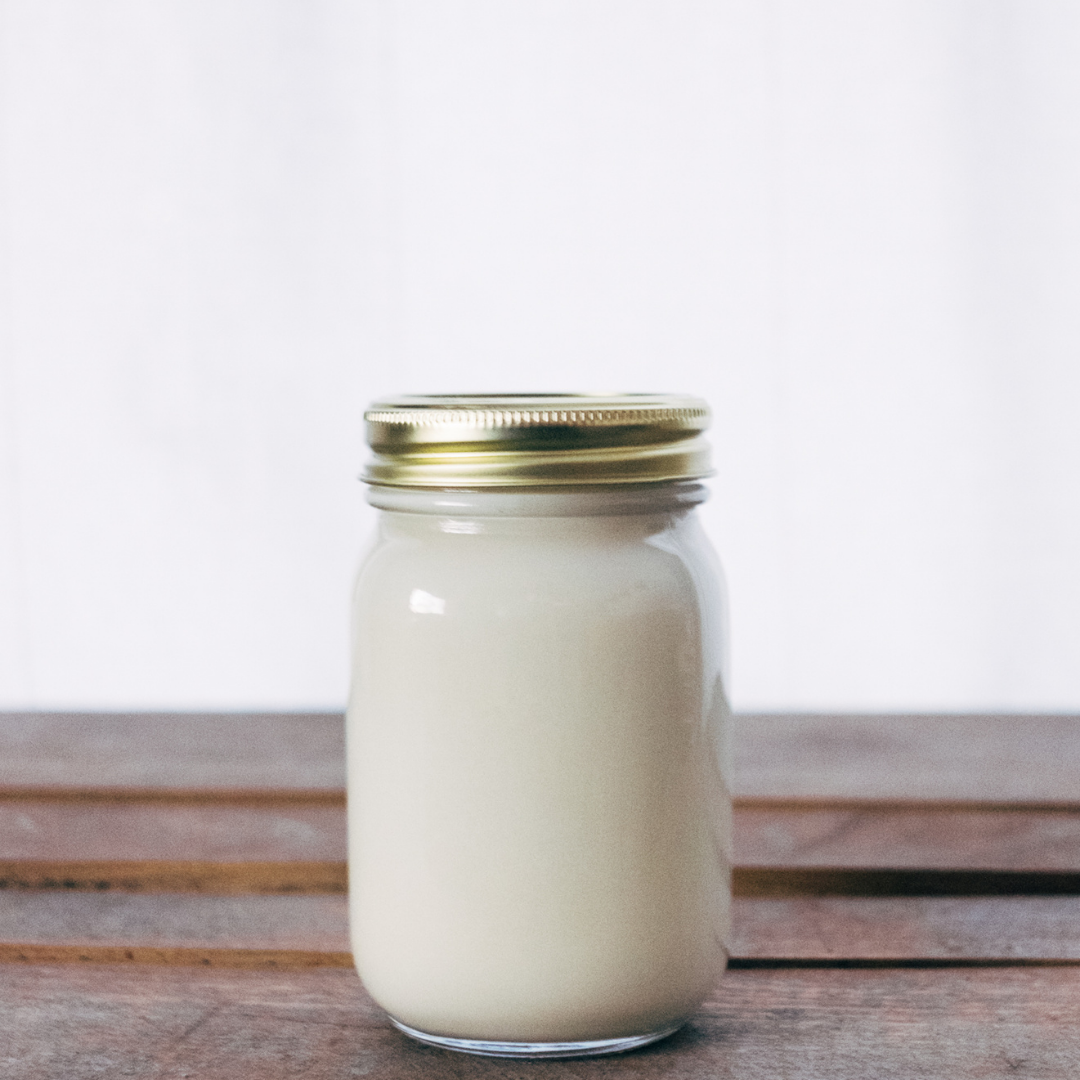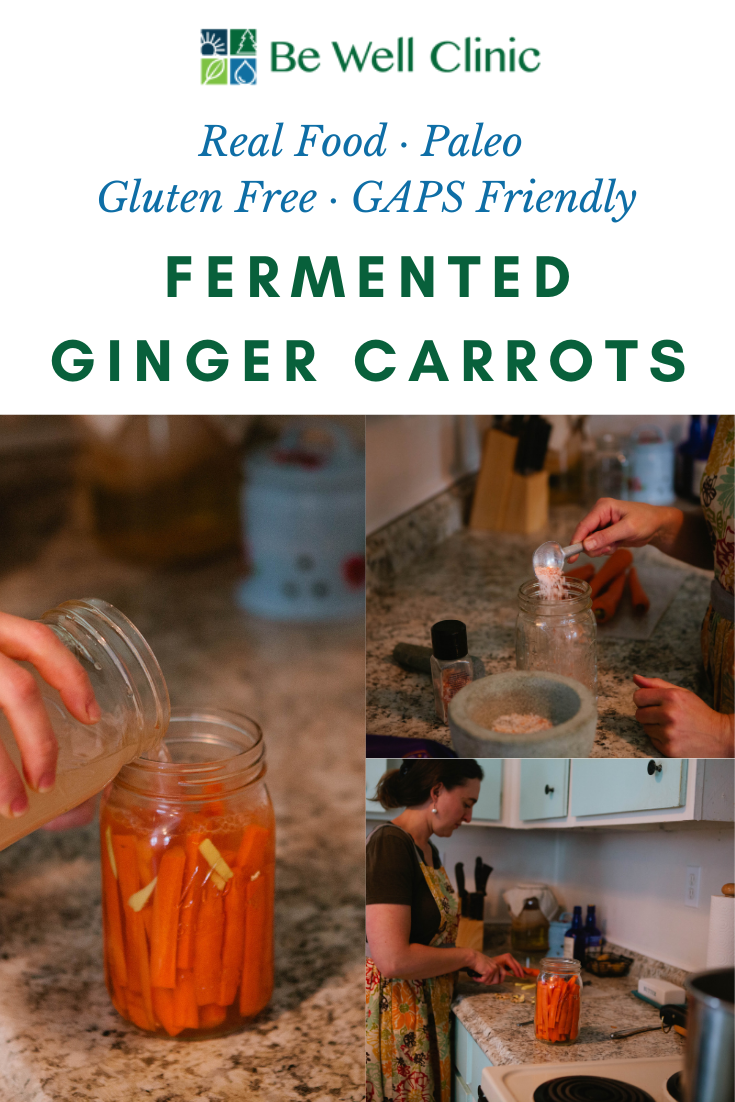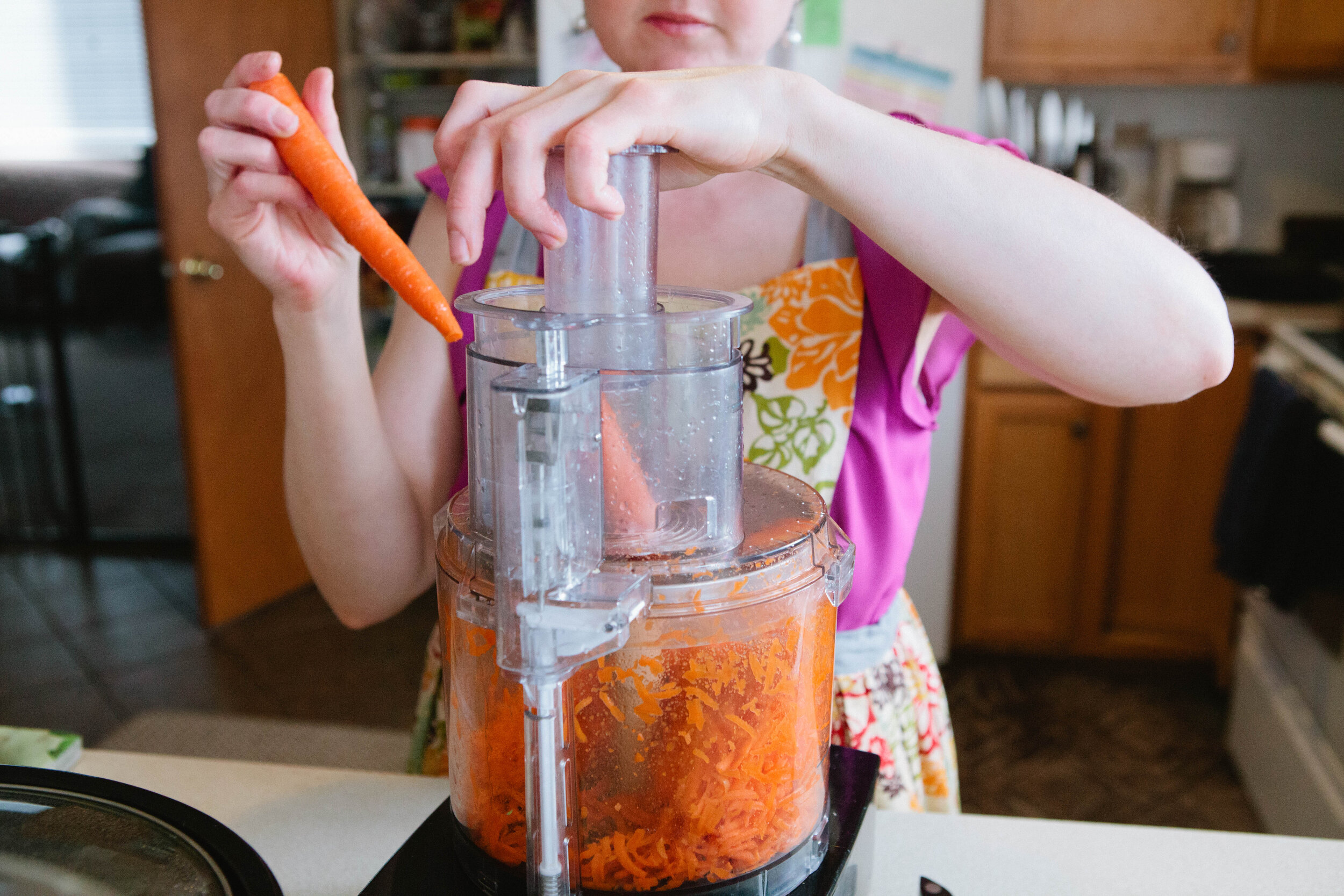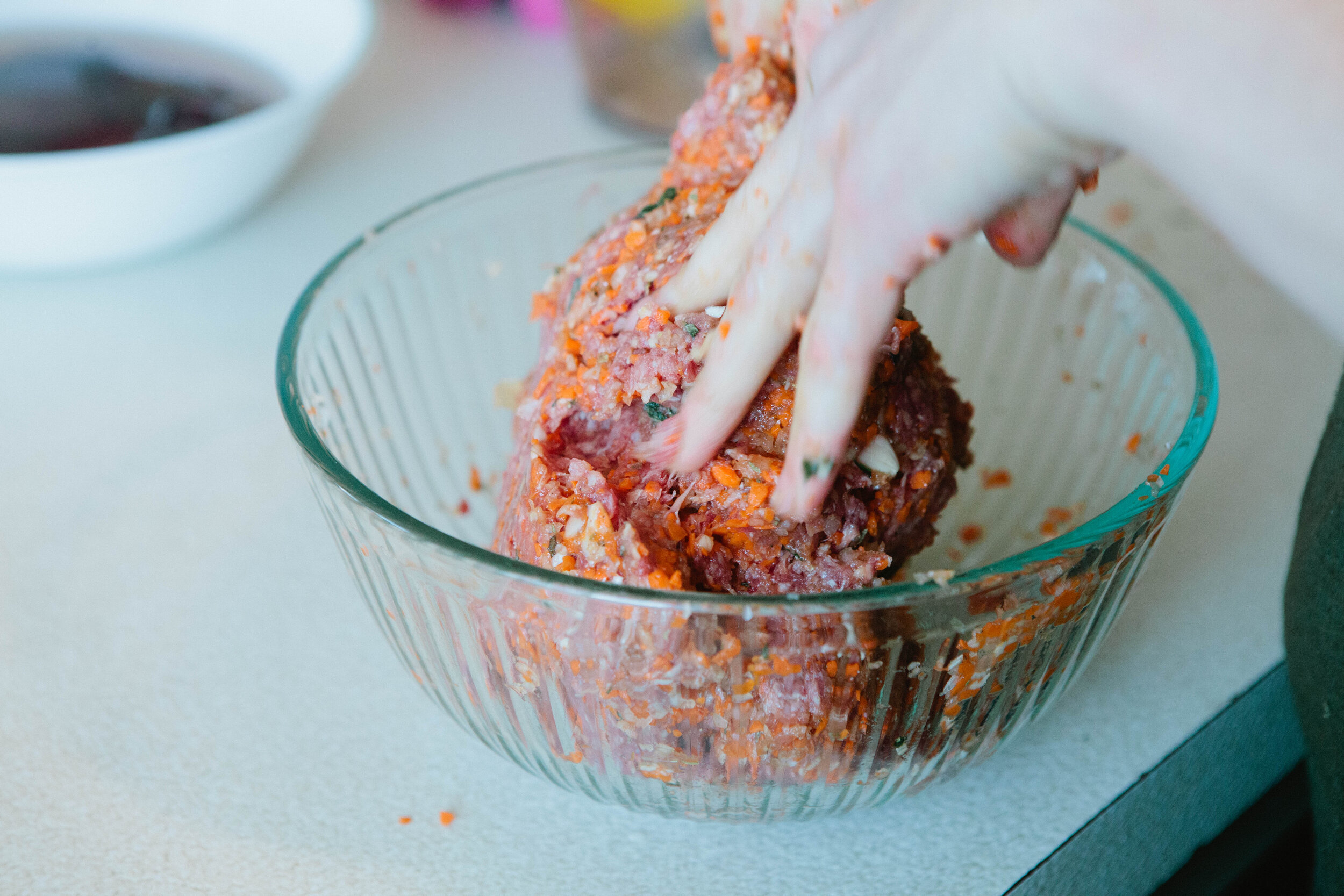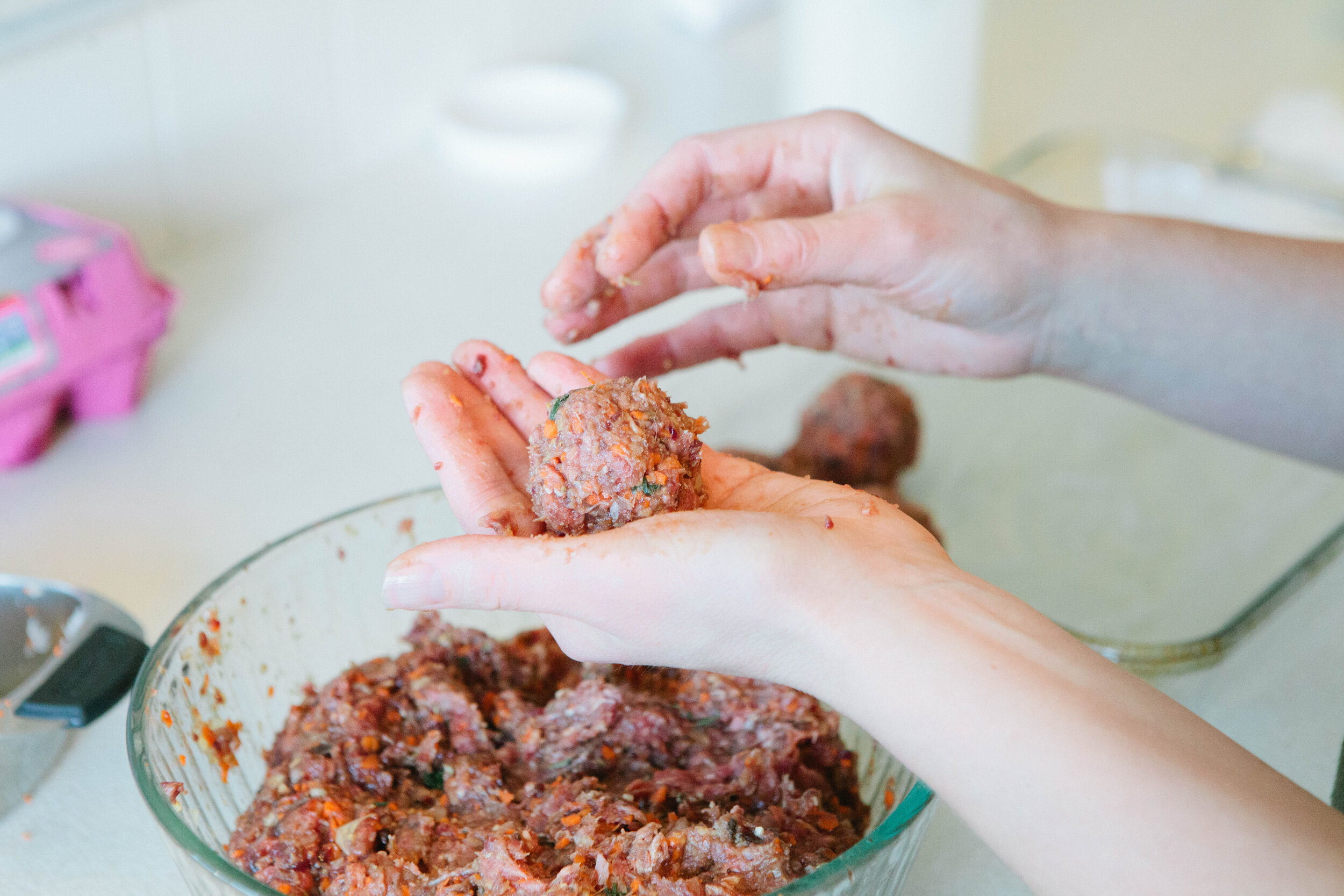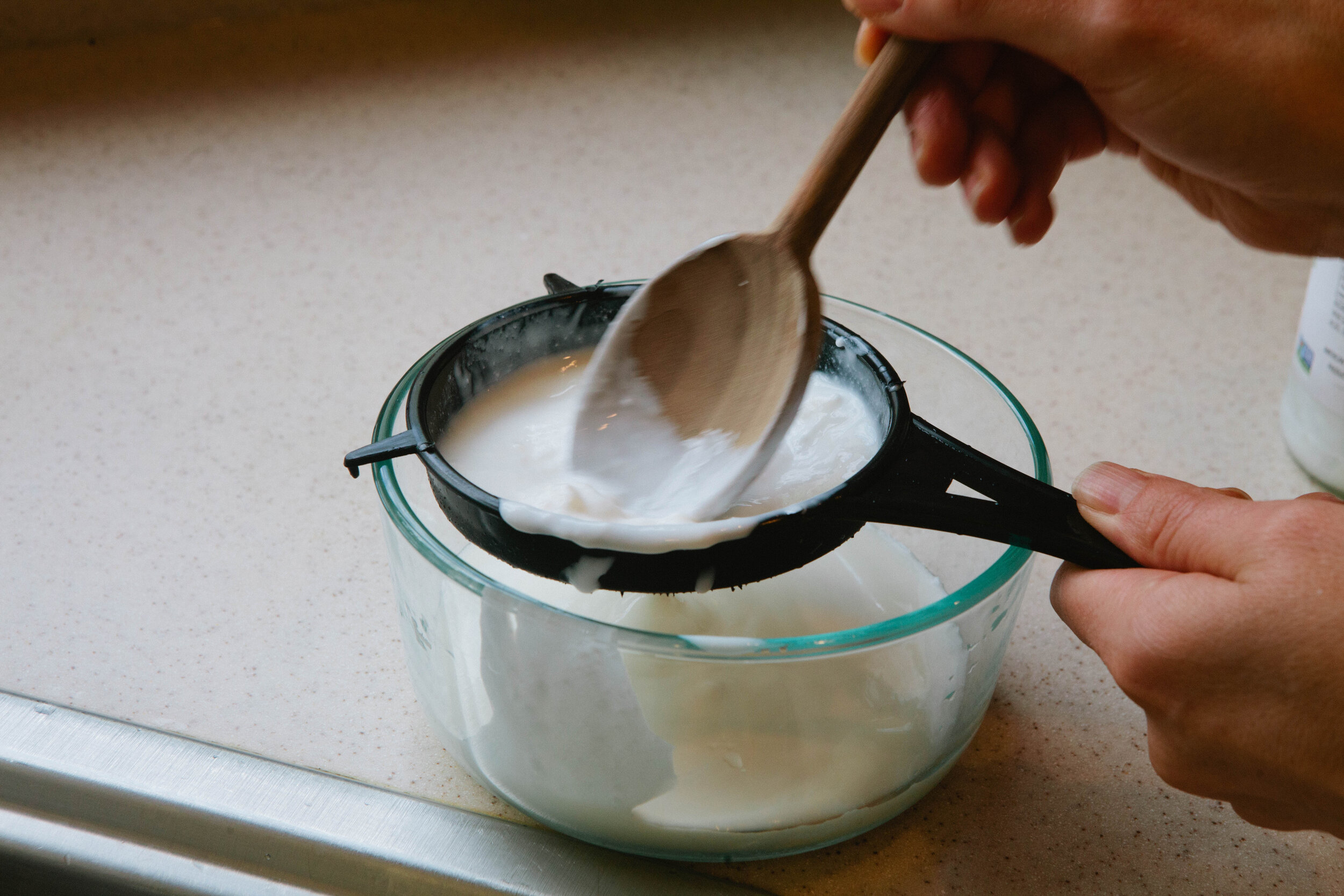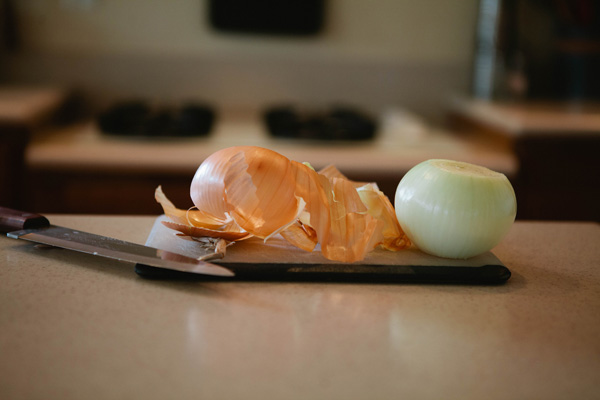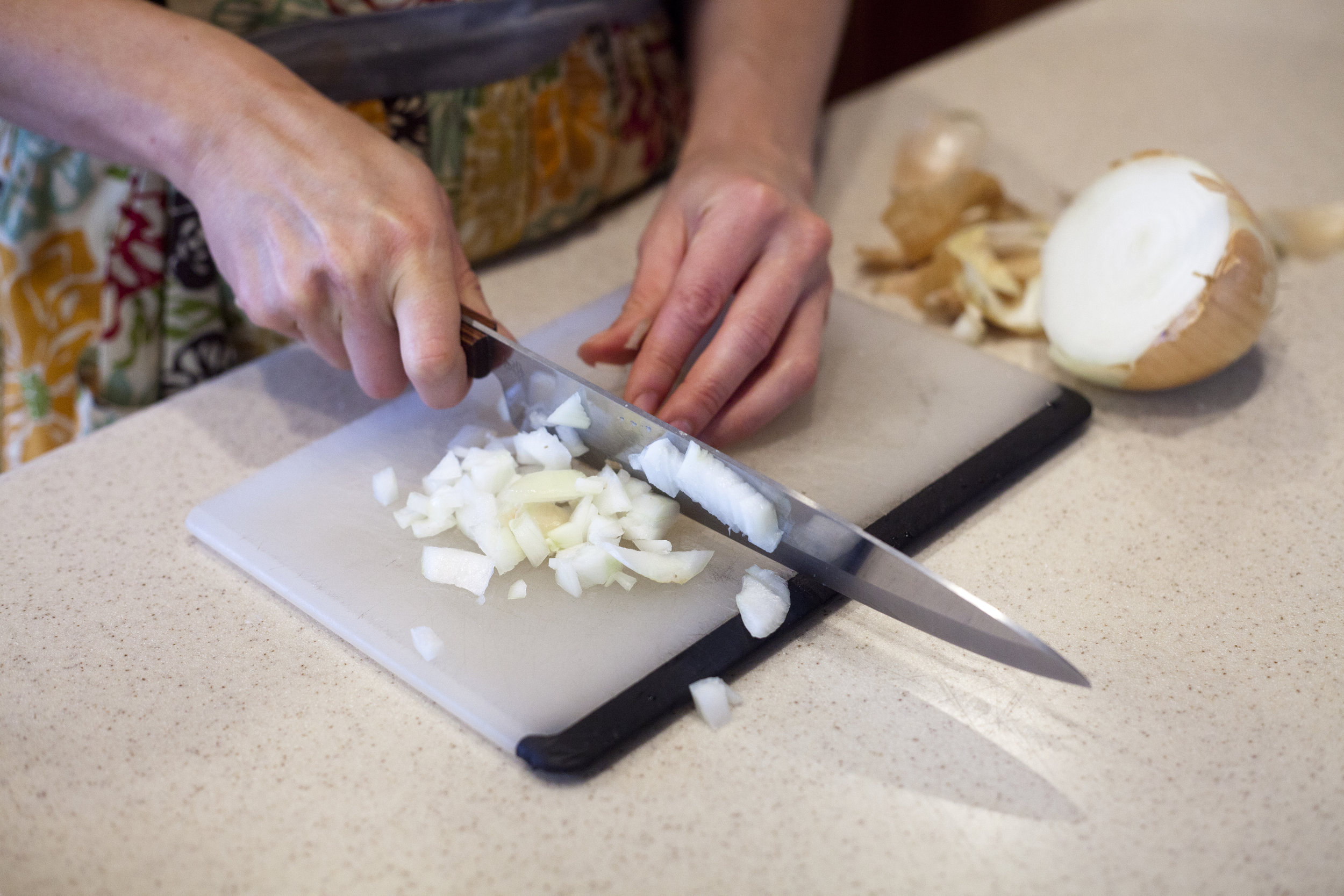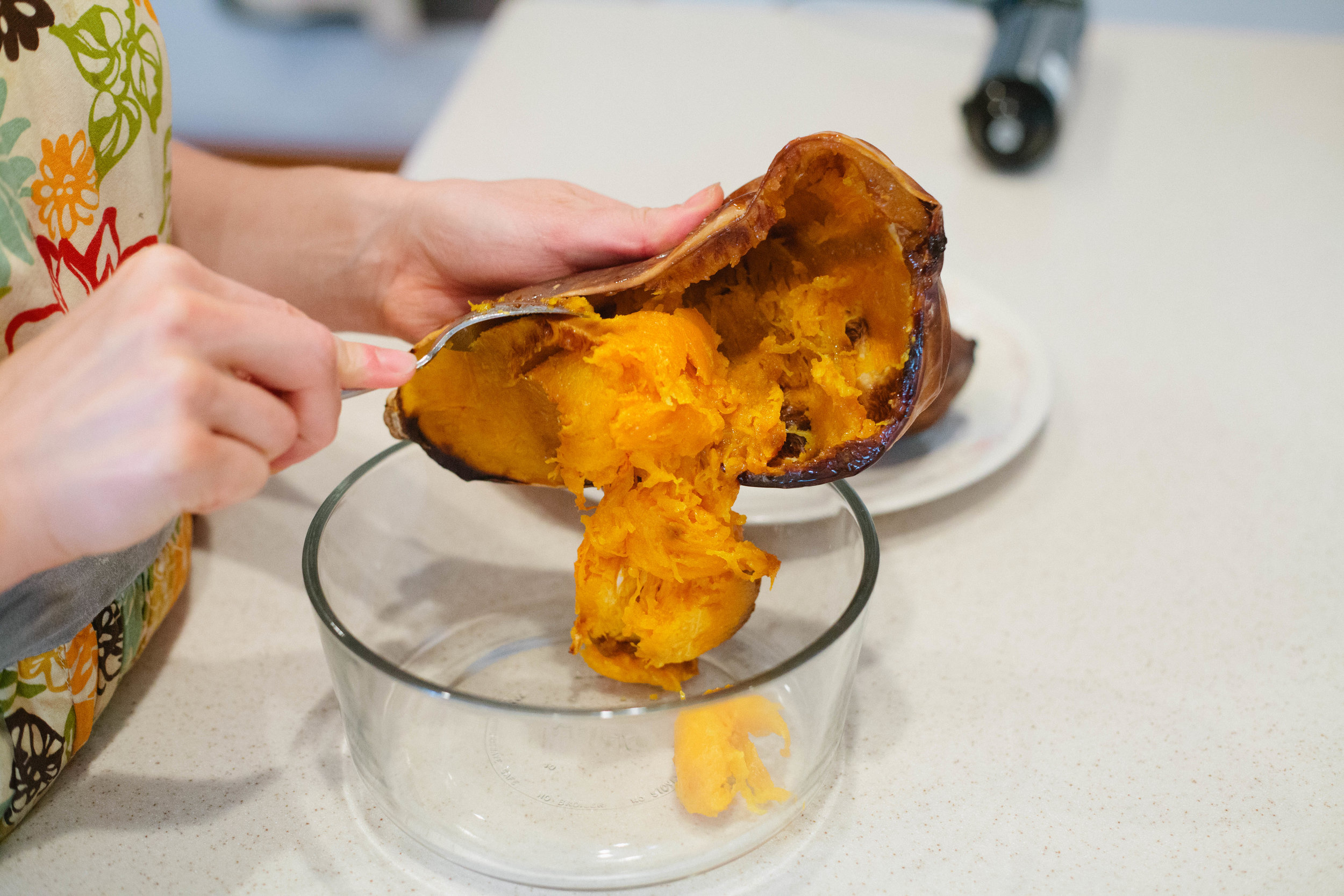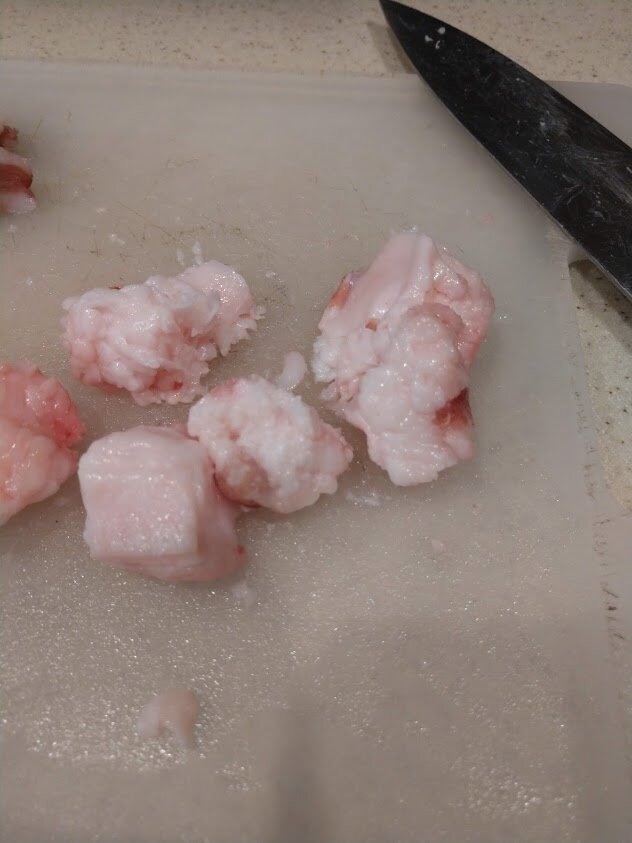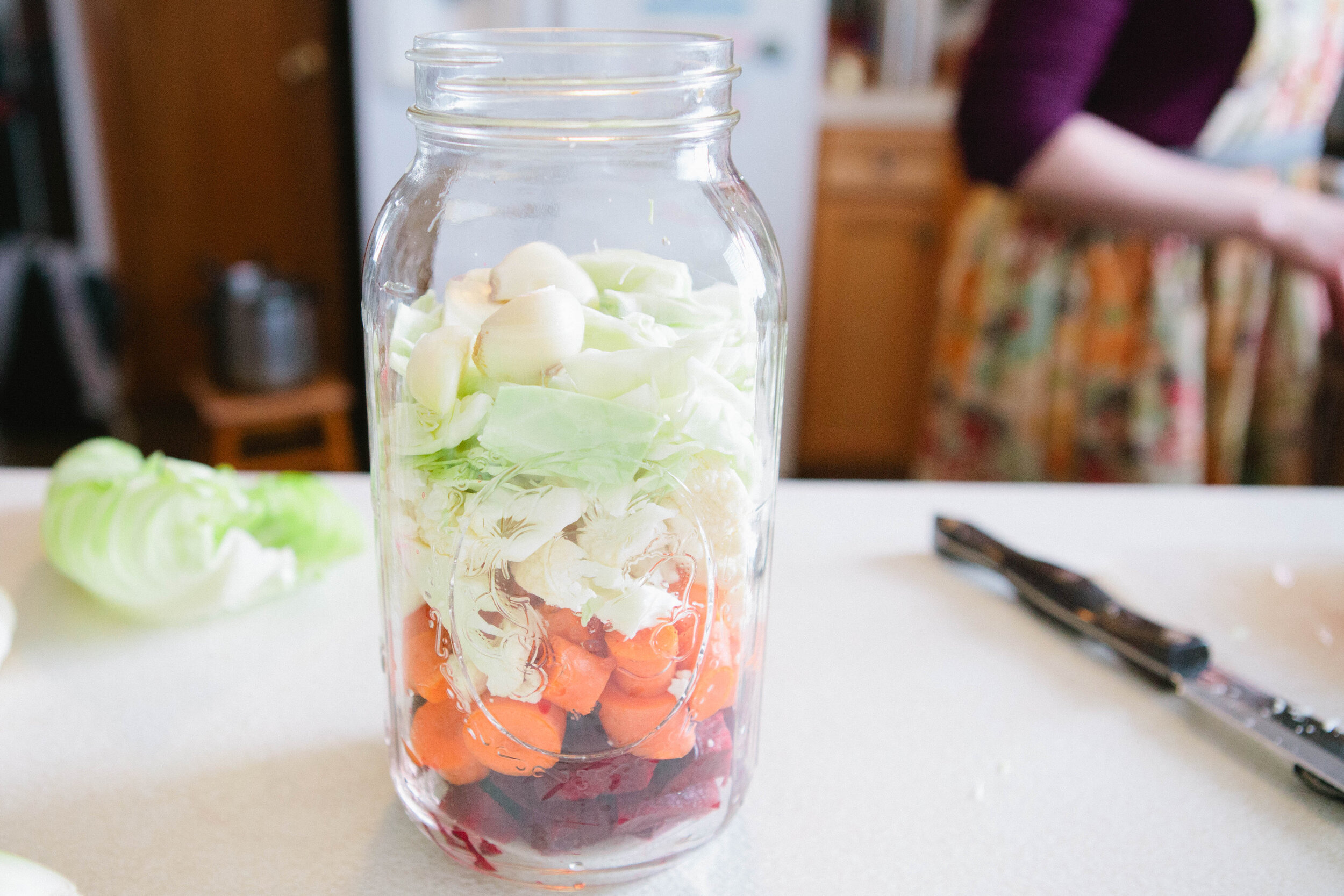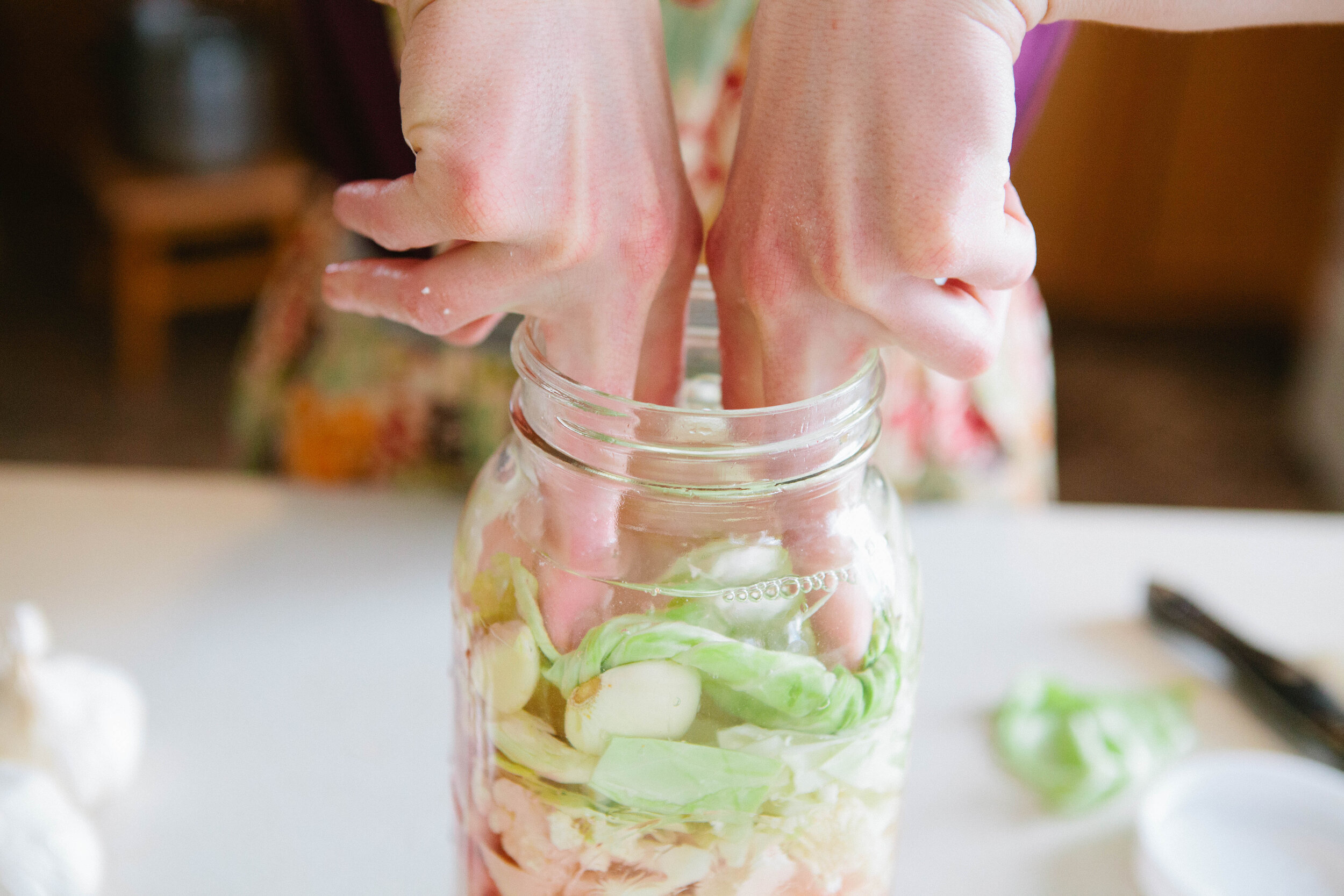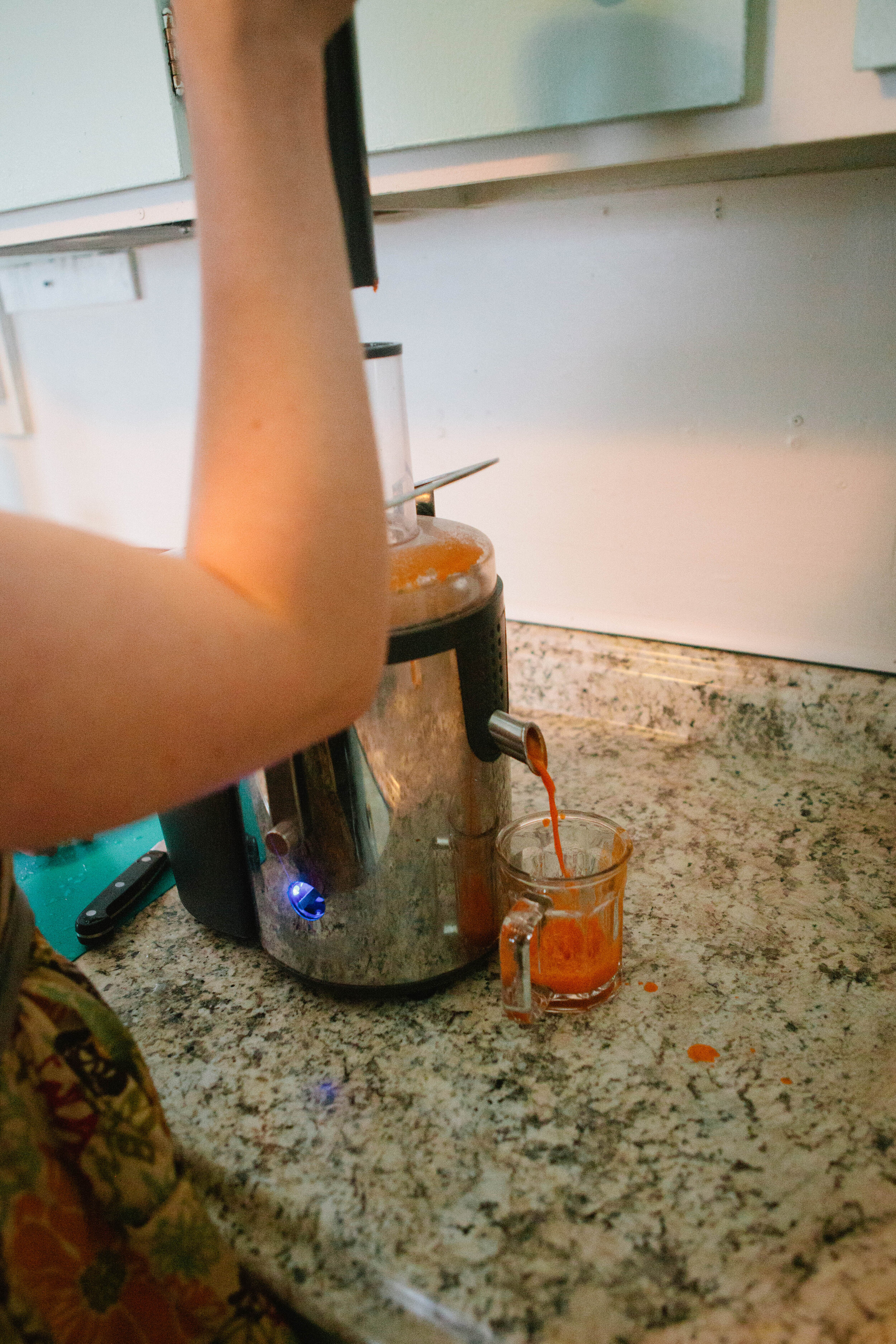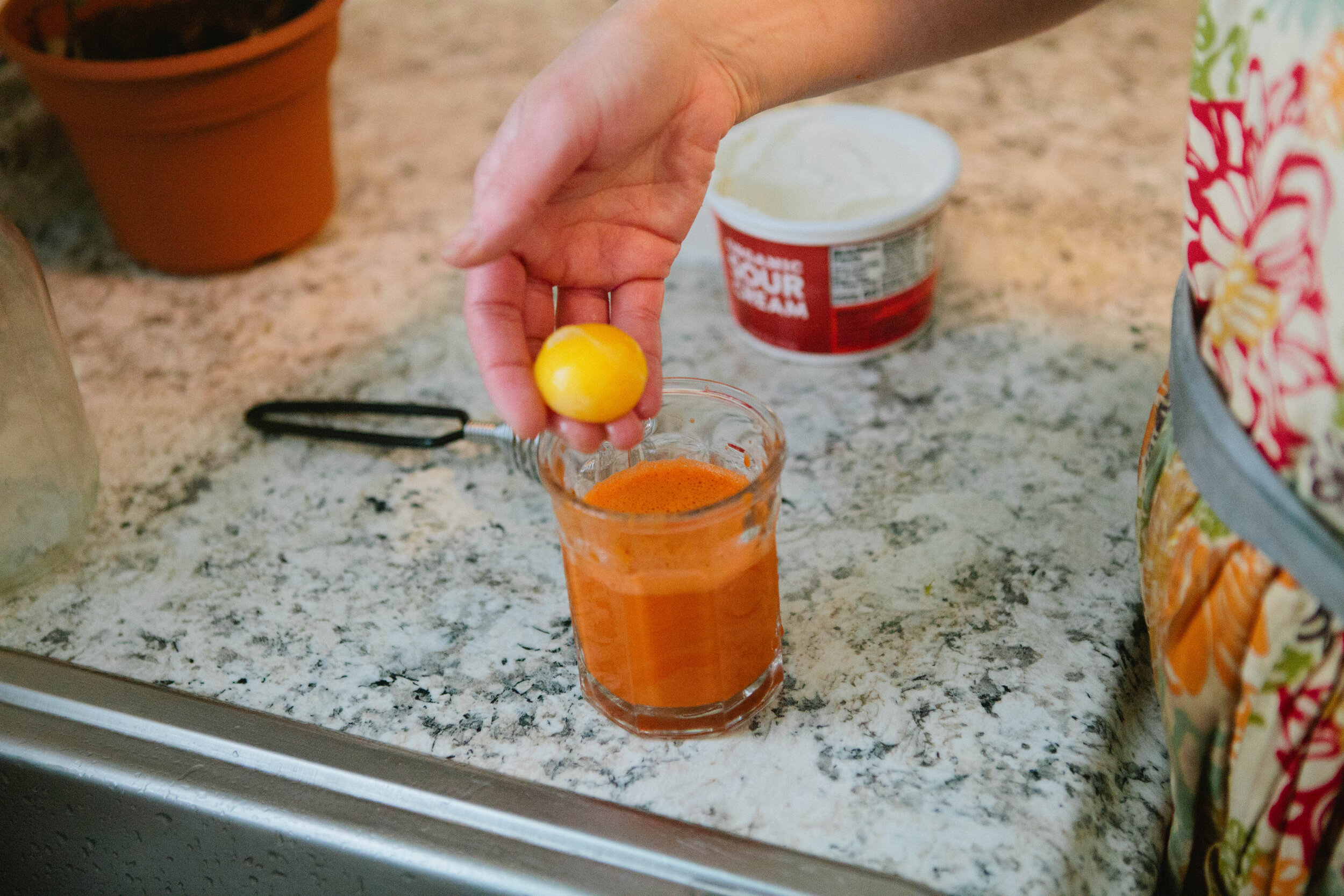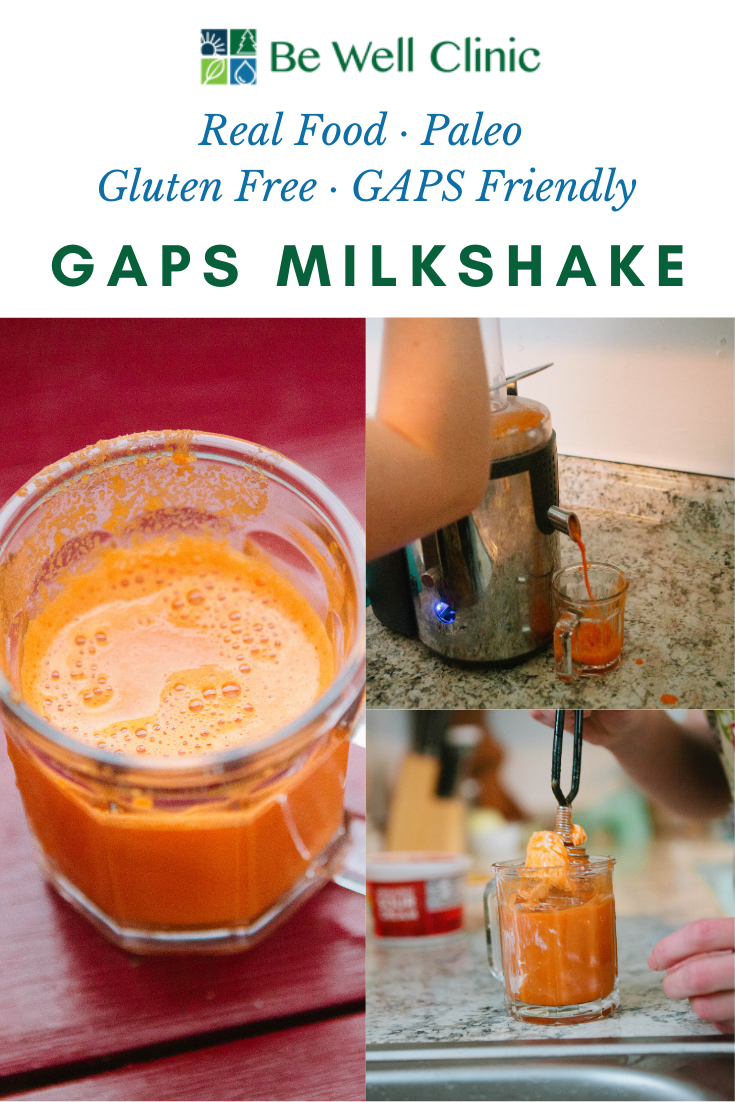These are a kid favorite! This recipe is based on the Nourishing Traditions Cookbook but I’ve found most kids prefer carrots sliced rather than grated.
If you’re new to fermenting, read this section first! Otherwise, skip down to the recipe.
Jars: I prefer using wide mouth jars for almost everything because small mouth jars are difficult to clean and access. There’s no need to sterilize jars for fermenting. If you clean your jars in your dishwasher, I recommend a quick rinse under hot water to remove any dishwasher soap residue.
Lids: Start with clean jar lids. You can reuse them as long as they are not very broken down or rusted. You can reuse lids from previous projects like water bath canning or other ferments as long as it is not rusty or the plastic is not visibly broken down.
Water: Be sure to use filtered water. The chlorine added to tap water kills microbial creatures so if you use it in your ferments, it will kill the good bacteria that we are trying to grow in our fermented food.
When you are jar fermenting, you need to have a tight seal with the metal lids but after you open a ferment, you can switch to a white plastic lid which will also save your metal lids from rusting and breaking down.
I have found that simple tight lids work best, I do not use any gas releasing lids as I find them unnecessary and even detrimental.
This is a super simple ferment to make and because these carrots taste almost fresh, it’s a great option for getting ferments into your children.
I have just started creating a brine in a separate jar from the ferments. I really like it because it makes fermenting so much faster. All I have to do is pack my jars and then pour my liquid over it. This is especially great if I’m doing multiple types of ferment mixtures or vegetables.
Fun fact about carrots: if you’re growing your own carrots, leave them in the ground until after the first frost. They become sweeter.
Ingredients
3-4 tbsp Sea Salt (I find in Colorado, 3 is plenty!)
5-6 Carrots
2 inches Fresh Ginger
Directions
Create a brine for the carrots. Fill a quart size jar with filtered water. Add salt. Stir.
Slice carrots into jar sized spears. Cut off the ends.
Add carrots to jars. Shake them to make sure they fit completely. Leave 1 inch head room.
Peel ginger with the back of a spoon or a knife. You can grate it or slice it. I prefer sliced because I don’t like the spice of ginger.
Wedge the slices of ginger in between the carrots so they don’t float.
Pour the brine of the carrots to the shoulder of the jar.
Make sure all the carrots and ginger are under the water.
Wipe the edge of the jar with a wet paper towel.
Put a lid on the jar and seal to hand tightness. You’re not securing it for take off!
Let set on the counter for a week because of the thickness of the carrots. You can always ferment longer or shorter. As long as there is pressure on the metal lid for at least 24 hours, I consider that fermented. The longer you ferment, the softer they will get. Because carrots are so hard, it will take a long time to get them too soft. If they do get too soft, you can simply cook with them!
I do not recommend burping ferments unless it appears that the jar lid is going to break. In general, I find this is only a problem when you have over filled your jars or when you are making garlic.
After a week, move the ferment to “cold storage.” This can be defined as the fridge, a cool place in your basement or a dark pantry. The lower the temperature, the slower the fermentation action will continue to happen. When you’re ready to eat it, switch the lid to a plastic lid. Wash and dry the metal lid to be used again.
Fermented Ginger Carrots
Ingredients
- 4 tbsp Sea Salt (I find in Colorado, 3 is plenty!)
- 6 Carrots
- 2 inches Fresh Ginger
Instructions
- Create a brine for the carrots. Fill a quart size jar with filtered water. Add salt. Stir.
- Slice carrots into jar sized spears. Cut off the ends.
- Add carrots to jars. Shake them to make sure they fit completely. Leave 1 inch head room.
- Peel ginger with the back of a spoon or a knife. You can grate it or slice it. I prefer sliced because I don’t like the spice of ginger.
- Wedge the slices of ginger in between the carrots so they don’t float.
- Pour the brine of the carrots to the shoulder of the jar.
- Make sure all the carrots and ginger are under the water.
- Wipe the edge of the jar with a wet paper towel.
- Put a lid on the jar and seal to hand tightness. You’re not securing it for take off!
- Let set on the counter for a week because of the thickness of the carrots. You can always ferment longer or shorter. As long as there is pressure on the metal lid for at least 24 hours, I consider that fermented. The longer you ferment, the softer they will get. Because carrots are so hard, it will take a long time to get them too soft. If they do get too soft, you can simply cook with them!
- I do not recommend burping ferments unless it appears that the jar lid is going to break. In general, I find this is only a problem when you have over filled your jars or when you are making garlic.
- After a week, move the ferment to “cold storage.” This can be defined as the fridge, a cool place in your basement or a dark pantry. The lower the temperature, the slower the fermentation action will continue to happen. When you’re ready to eat it, switch the lid to a plastic lid. Wash and dry the metal lid to be used again

